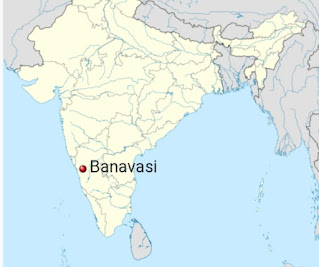The Chutus ruled a kingdom centered around the city Banavasi in present-day Karnataka for over two centuries, from 78 AD to 345 AD. The Chutus were probably subordinate to the Satavahanas in the beginning and assumed independence when the Satavahana power declined. They were one of the several dynasties described collectively as ''Andhra-bhritya'' in the Puranas.
The word ''Chutu'' in Kannada means ''crest'' Chutu inscriptions contain the emblem of the cobra hood implying Chutu meant the ''cobra crest''. This also connects them to the Nagas tribes as they were associated with the region of Nagara Khanda around modern Banavasi
Coins of Chutus were first found at Karwar, a town near Banavasi in 1833, then from excavations at Chandravalli (Chithradurg) in 1908 and in 1947 from Chandravalli excavations.
Numismatic evidence suggests that the Chutus were surrounded by other Satavahana feudatories, the Kuras of Kolhapur in the north and the Sadakana Maharathis of Chandravalli. The coins of the three families are similar, and most of the coins, can be dated to the 2nd century AD. By the last quarter of the 2nd century, the power of these three feudatory families was eclipsed by the Satavahanas, who appear to have assumed greater control over their territories.
When the Satavahana power declined in the first half of the 3rd century AD, the Chutus retained their authority at Banavasi, unlike the Kuras and Sadakana Maharathis. Their rule is attested by at least four inscriptions dated between 260 AD and 340 AD. They appear to have controlled Kunkalli, Balli and Konkan in present day Goa, as subordinates of the Bhojas
Chutu dynasty came to an end probably in the first or second half of the 3rd century, around 250-275 AD. Of the Chutu dynasty two kings are known through inscriptions, Hariti-putra Chutu-kadananda Satkarni and his grandson Hariti-putra Siva-skanda-varman, who ruled in Banavasi before the Kadamba dynasty.
The Chutus appear to have continued the policy of consolidating their power by intermarriage with their neighbours (Ikashvaku dynasty) and the Satavahana dynasty. The designs on the Chutu coins suggest that they were Buddhists.
The Chutu rule seems to have ended when Mayurasharman established the Kadamba dynasty with its capital at Banavasi in 345 AD.
Lead coin of Chutus of Banavasi, Obverse: Ten arched hill, river symbol below, Reverse: Srivatsa














No comments:
Post a Comment
Any inputs or feedback is welcome!